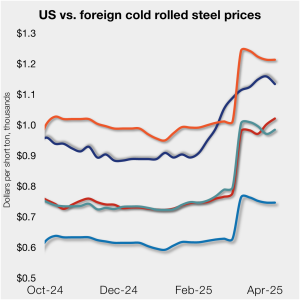
US, offshore CRC prices diverge
US cold-rolled (CR) coil prices declined this week, slipping for the first time since early February. Most offshore markets deviated, moving higher this week.

US cold-rolled (CR) coil prices declined this week, slipping for the first time since early February. Most offshore markets deviated, moving higher this week.
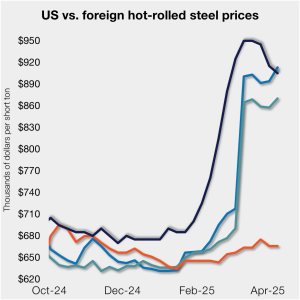
Domestic hot-rolled (HR) coil prices declined this week for a third straight week. Most offshore markets bucked the trend and gained ground. Uncertainty in the US market around tariffs, especially after “Liberation Day,” caused US prices to slip as buyers moved to the sidelines. It’s unclear to date whether the 90-day pause on the more […]

For trading partners, the tariffs will reduce demand for exports and depress growth. Over the coming days, trade partners will almost certainly announce retaliation, which will hit US exports.

Respondents to the SMU Survey weigh in on the steel landscape.

The constant flow of information we all receive can be a little overwhelming, but SMU is here to help with a snapshot of the week.
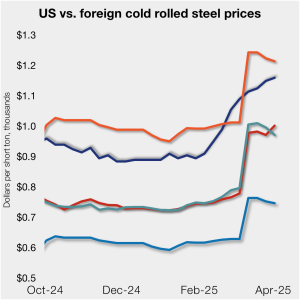
US cold-rolled (CR) coil prices moved higher again this week, while offshore prices were mixed.

Canada imposes auto tariffs, while automaker Stellantis temporarily idles some plants.
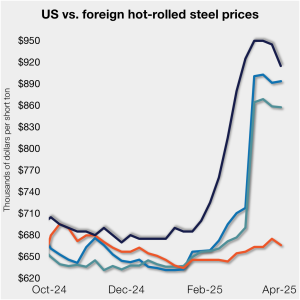
Domestic hot-rolled (HR) coil prices declined this week, a trend again reflected in most offshore markets. Despite similarities, the shifting tariff landscape has made for a wild ride in Q1.

Announcing tariffs is easy. Implementing them at the border? That’s a whole different ball game.
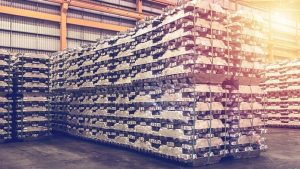
The United Arab Emirates’ Emirates (UAE) Emirates Global Aluminum (EGA) announced plans to spend $1.4 trillion dollars in the US over the next 10 years, including a greenfield primary aluminum smelter. Is this real or another soundbite?
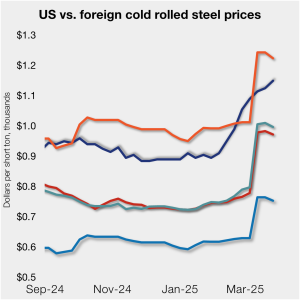
US cold-rolled (CR) coil prices increased again this week, while offshore prices declined.
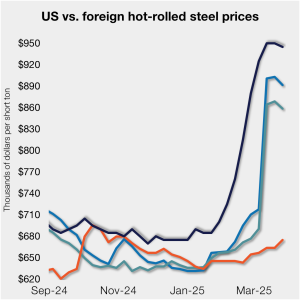
The threat of tariffs over the past two months has been a springboard for US prices. But the Section 232 reinstatement on March 13 narrowed the domestic premium over imports on a landed basis.
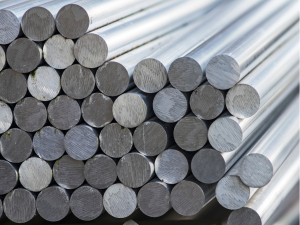
The aluminum market is facing a wave of uncertainty following the latest Section 232 tariffs, leaving many in the industry asking the same key questions – from why the Midwest Premium isn’t reacting as expected to how these tariffs will impact Canada, value-added products, and scrap flows – there’s plenty to unpack. We’ve put together […]
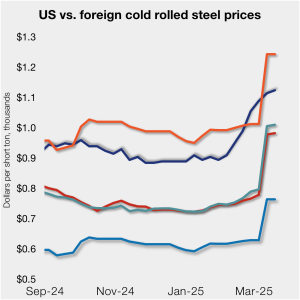
US cold-rolled (CR) coil prices moved higher this week, a trend not evenly shared by offshore prices.
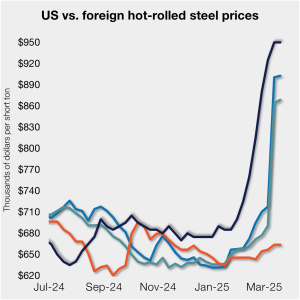
Domestic hot-rolled (HR) coil prices were flat this week, a trend mirrored in offshore markets.

Which is more important: producers or consumers? New (and arbitrary) steel and aluminum tariffs took effect last Wednesday. Based on the Section 232 trade restrictions initially imposed in 2018 – and kept by the Biden administration – they abrogate agreements between the US and Canada, Mexico, the UK, the EU, Argentina, Brazil, and Australia. They […]
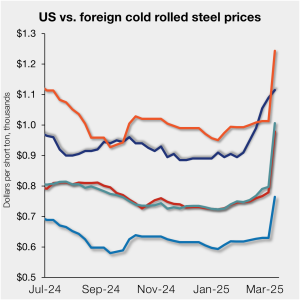
Fully restored Section 232 tariffs on steel on March 12 cut the widening premium US prices had over most imports on a landed basis.

A quick way to catch up on what you might have missed.

Let's take a look at different tariff scenarios.
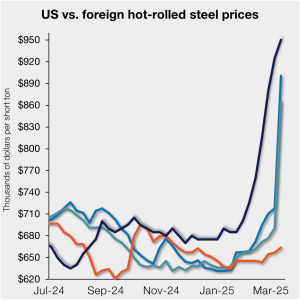
Domestic hot-rolled (HR) coil prices moved higher this week, still largely outpacing increases seen in offshore markets. But the reinstatement of undiluted Section 232 tariffs on steel on March 12 cut the ballooning premium stateside prices had gained on most imports on a landed basis. The premium stateside tags had over prices abroad stood at […]
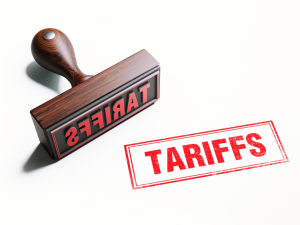
“CBP expects full compliance from the trade community for accurate reporting and payment of the additional duties. CBP will take enforcement action on non-compliance," the agency said in a March 7 bulletin.

Section 232 tariffs are expected to go into effect March 12.
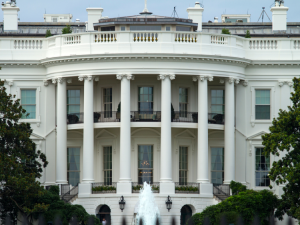
The penalties are expected to be reinstated on Wednesday, March 12.
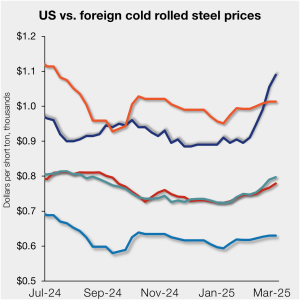
US cold-rolled (CR) coil prices continued to rise this week, well ahead of offshore prices. The price spread between stateside-produced CR and imports reached a 14-month high in the week ended March 7. Steady price gains in overseas markets continue to be overshadowed by increases in domestic prices. The result? The US premium over imports […]

The Trump 1.0 tariffs appeared to have little positive effect on the US manufacturing, partly because they hurt export competitiveness.
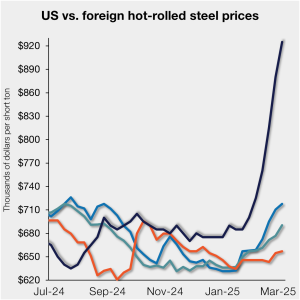
Domestic hot-rolled (HR) coil prices moved higher this week, widely outpacing increases seen in offshore markets.
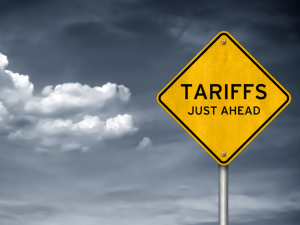
April 2 is when reciprocal tariffs are expected to kick in.
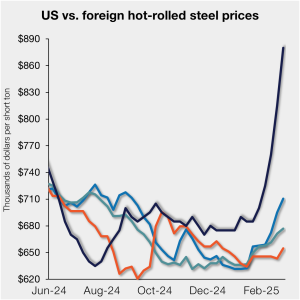
Hot-rolled (HR) coil prices continued to rally in the US this week, quickly outpacing price gains seen abroad. The result: US hot band prices have grown widely more expensive than imports on a landed basis. The premium US HR tags carry over HR prices abroad now stands at a 14-month high. SMU’s average domestic HR […]

President Trump has directed Commerce Secretary Howard Lutnick to investigate copper imports into the US under Section 232 of the Trade Expansion Act of 1962 on national security grounds.
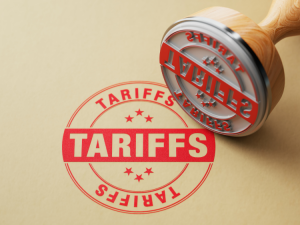
It won't be so easy to restart idled aluminum production in the US, AMU says.